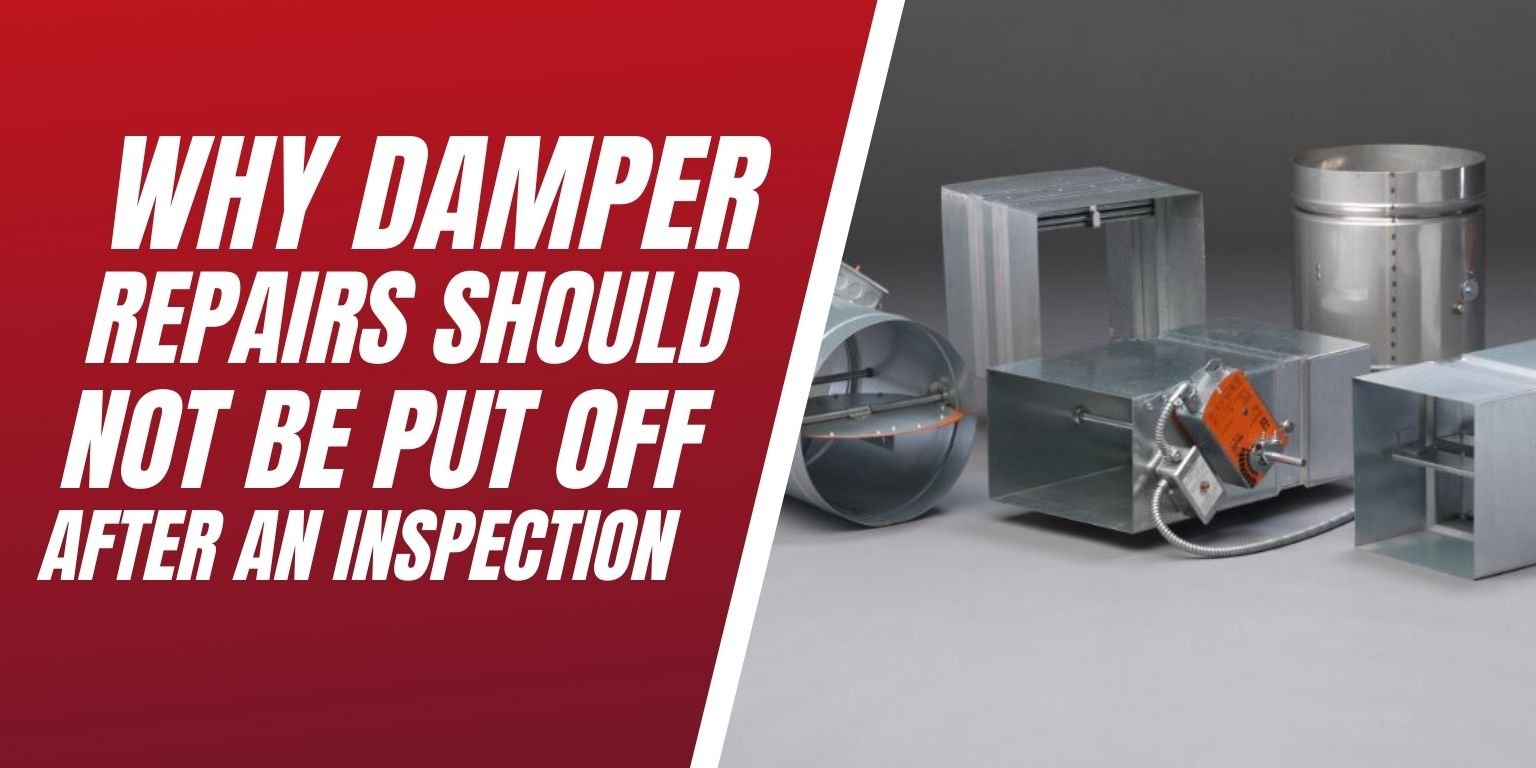
Fire and smoke dampers are an important part of a building's overall fire and life safety protection system. Each of these dampers have been designed to prevent the spread of fire and smoke through the ductwork of a facility. Unfortunately, dampers are located within the ductwork of a facility. This makes them hidden and can often be forgotten. Therefore, dampers have a tendency to frequently fail during routine inspections. It may not seem like a big deal, especially with other fire protection features (fire doors, firestopping…etc.) put in place. But fire and smoke can spread fast, and one of the quickest ways for a fire to travel is through the ventilation system. If a damper is out of compliance, the chances of fire and smoke spreading between compartments increases.
To help ensure that dampers are properly working, the National Fire Protection Association (NFPA) 80 (Fire Dampers) and NFPA 105 (Smoke dampers) state, “If the damper is not operable, repairs shall begin as soon as possible." Below is a list of the most common reasons why dampers fail their inspection.
Top Fire Damper Failure Reasons
Fire dampers prevent the spread of fire within the ductwork through fire resistant rated walls and floors. They work when the heat from the fire causes the normal temperature of a room to rise to about 165 degrees Fahrenheit. That heat causes the fusible link, which is holding the damper open, to melt and allows the damper to be closed. Some of the most common reasons for a fire damper to fail their routine inspection include:
- Screw in track
- Linkage out of alignment or broken
- Bound in tracks (racking)
- Damper rusted
- Damper propped open
Top Smoke Damper Failure Reasons
Smoke dampers resist the passage of air and smoke within the ductwork. They are typically operated by a smoke detector, which would also be located in the duct. Once smoke has been detected, the smoke detector sends a signal to the damper’s actuator, which uses the jackshaft and linkage to open and close the blades of the smoke damper. However, there are a few common reasons we will see for a smoke damper to fail.
Pneumatic Actuators – Use air to function properly and will fail if there is:
- No Air to Actuator
- No Airline to Actuator
- Not Enough Air to Actuator
Electrical Actuators – Use power to function properly and will fail if there is:
- No Power to Actuator
- No Power Wired to Actuator
This is why damper inspection and repairs are so strictly enforced. In order for a damper to do its job it must first be properly working. If the parts of a damper are inoperable, broken, missing or rusted then the damper itself will not function properly. And if a damper doesn’t work properly, then the facility and everyone inside is at risk in the event of a fire.
Part of making sure that your dampers are compliant and properly working is to have routine maintenance. If you are a healthcare facility then you need to have your dampers tested and repaired every 6 years, and non-healthcare facilities are required every 4 years.
Whether you’re are a healthcare facility, educational campus, hospitality, government, or industrial facility, we are here to help. Contact Us Here or call 888-675-4519 for more information about fire and smoke damper repairs.

